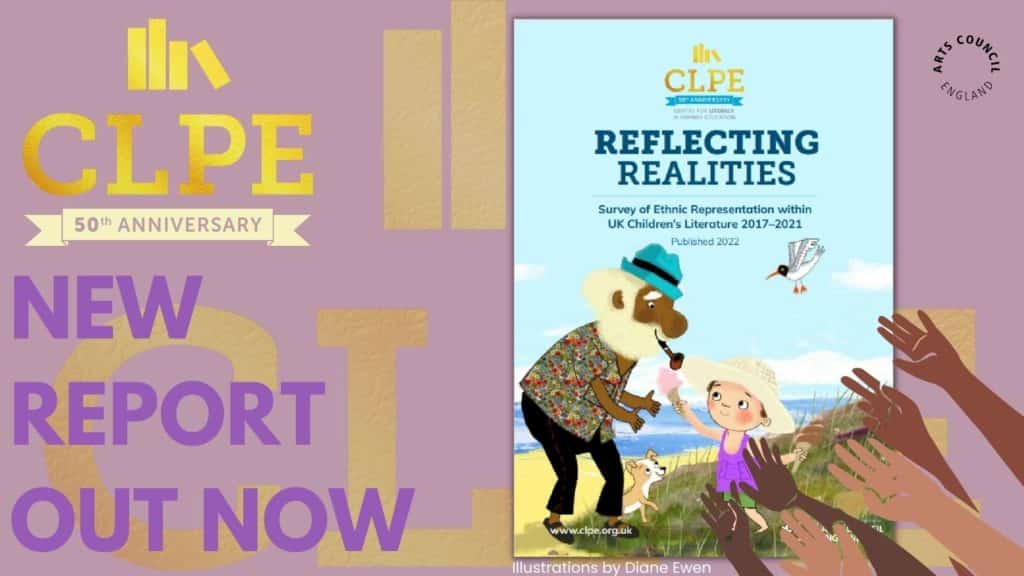This month the Centre for Literacy in Primary Education (CLPE) released their 5th annual Reflecting Realities Survey of Ethnic Representation within UK Children’s Literature, which identifies and evaluates representation within picturebooks, fiction and non-fiction for ages 3–11. The newly published report can be viewed here and you can read more about the methodology behind the report here. This year’s report is illustrated by Diane Ewen.
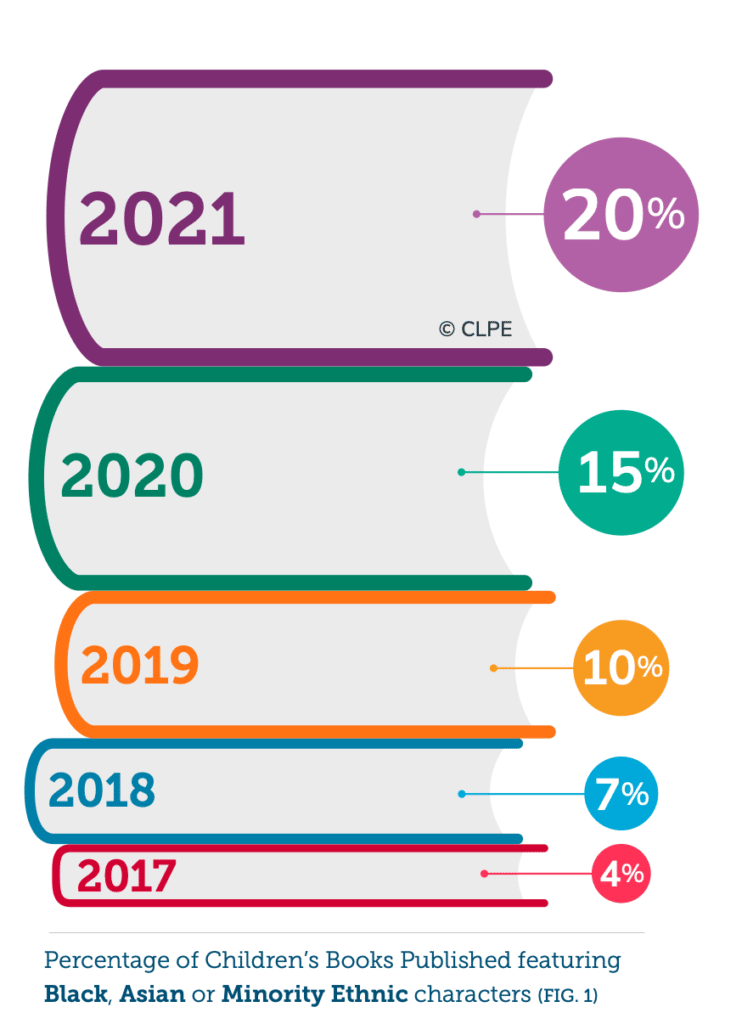
The latest summary of findings shows an increase in the number of children’s books published featuring a minority ethnic character from 4% in 2017 to 20% in 2021.
Minority representation in children’s books is up significantly from the 4% reported in the inaugural report in 2017. Furthermore, the percentage of children’s books published featuring a main character from a minority ethnic background has increased from 1% to 9% in the same time period. While the increase is cause for celebration – it still needs to be considered in the context that 33.9% of children of primary school age in England are from a minority ethnic background, and there is much work still to do.
The survey also indicates that minority representation in Fiction remains low and lags significantly behind increases in Picturebooks and Non-Fiction. Of the three text types reviewed, Fiction is the one that has seen the slowest and smallest incremental year-on-year change with 11% of Fiction books published featuring minority ethnic characters. Given that the large majority of non-fiction books for the 3-11 age range are illustrated, this disparity can perhaps be attributed to an illustrated work being both easier to identify and to ensure presence than in Fiction.
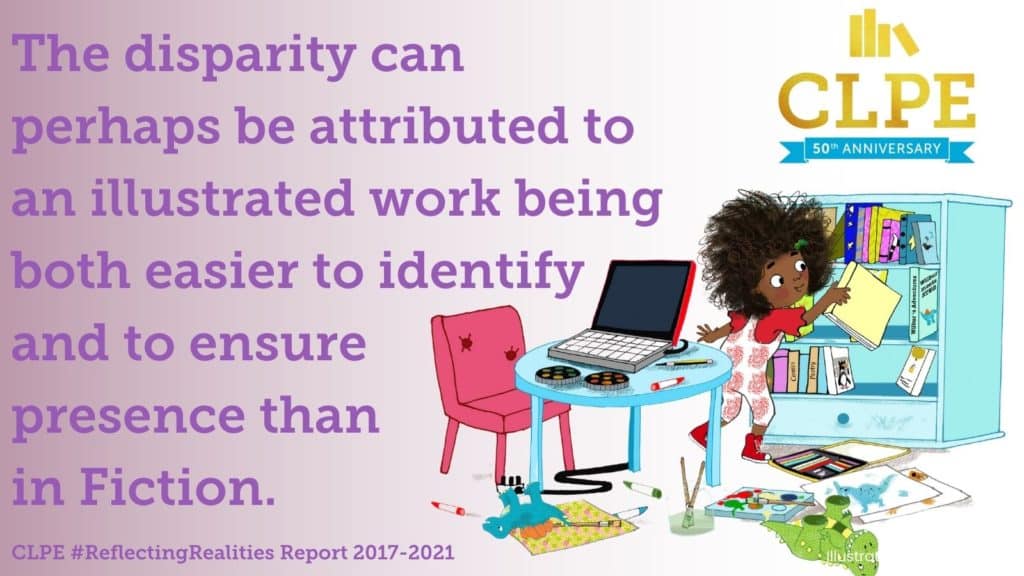
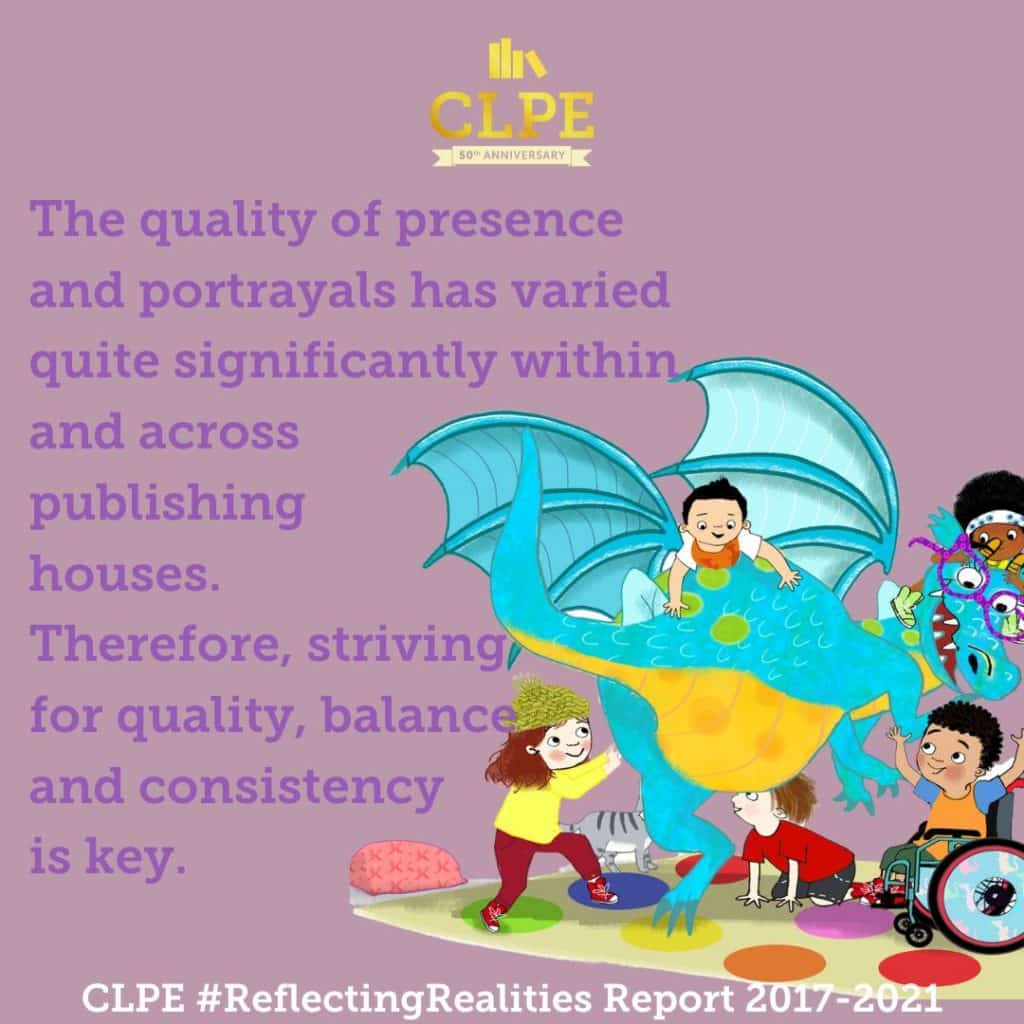 The report writers also comment that the quality of presence and portrayals has varied quite significantly within and across publishing houses, and gives examples of a handful of exemplary titles in terms of authentic character portrayal. The report indicates a desire to strive for quality, balance and consistency across the publishing industry.
The report writers also comment that the quality of presence and portrayals has varied quite significantly within and across publishing houses, and gives examples of a handful of exemplary titles in terms of authentic character portrayal. The report indicates a desire to strive for quality, balance and consistency across the publishing industry.Recognising the importance of teachers, booksellers, librarians, book champions and organisations that are doing excellent work on the ground on a day-to-day basis, the report writers offer a checklist of key questions for those involved in children’s publishing, curation and book selection:
Determining Meaningful Presence
Do the characters of colour featured in the books we publish/stock reflect the UK population and the world at large, not as a tick box exercise but as a meaningful and accurate representation of the interconnected, diverse society within which our children are growing up?
Are characters of colour central to a broad range of narratives?
Do characters of colour exist across a range of genres and within both fiction and non-fiction?
Are there a variation and balance of themes explored in the titles in which characters of colour feature?
Have you been attentive to the position that a character of colour holds in the narrative? What position does the character hold? What is the dynamic within the cast? What is the extent of their agency and contribution to the plot?
Have careful research and consideration been exercised to ensure respectful, nuanced and layered portrayals of characters of colour?
Are characters of colour well developed and authentically portrayed? How effectively are their being and personality conveyed?
Ensuring Breadth and Balance
Are readers able to encounter varied portrayals of characters of colour, depicted with a range of personalities and represented as experiencing a full spectrum of emotions in the books you produce/ stock?
Is the content of our titles balanced, allowing for cultural specificity without reducing characterisations to derogatory stereotypes or one-dimensional shorthand?
Have we assessed the balance of our output/ stock to ensure that characters of colour are not predominantly defined by their struggle, suffering, exceptionalism or ‘otherness?
Valuing the Creatives
Is there a sustained investment in both established and new authors from a range of backgrounds who are able to paint characters and worlds with the integrity that the subject matter deserves? Does your output/ stock reflect this diversity of talent?
There is still some way to go before UK children’s books more accurately reflect the reality of the school population of England, but the speed of change serves to reinforce the benefit and tangible impact of the survey and a wide range of other initiatives across the publishing, charity and literature sectors. It is the intention of CLPE and their partners to continue to publish this survey, at least for the next five years.
CEO of CLPE Louise Johns-Shepherd, says:
‘We are delighted to see the upward trend in numbers, we are determined that it won’t be a ‘trend’ that disappears or that dips. We will continue to do this work and to support ongoing dialogue within the publishing industry because we believe in the power of children’s literature to change lives and we believe inclusive representative casts of characters in children’s literature make books better.’
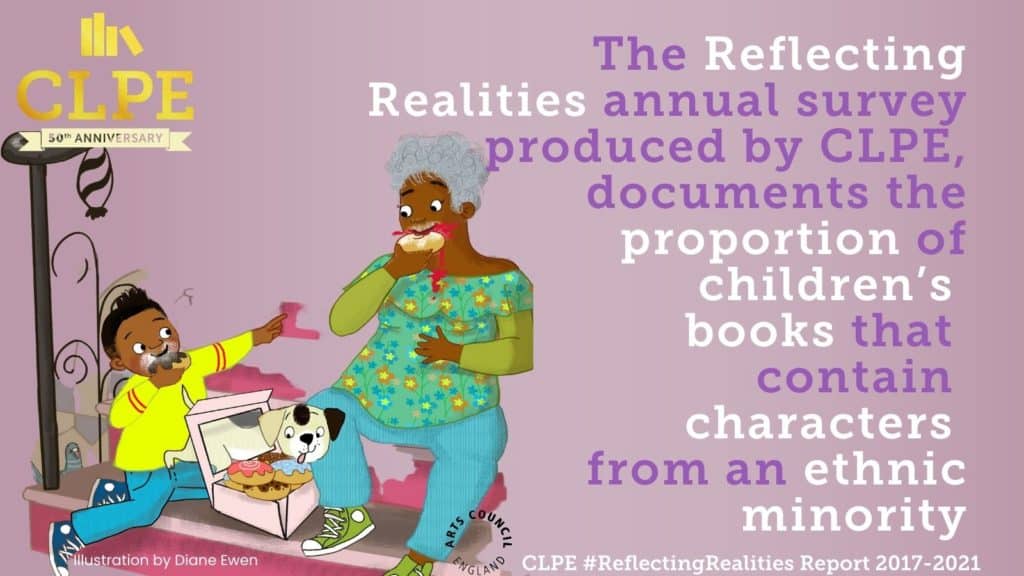
If you are interested in expanding your stock of diverse book titles, why not browse our diversity hub featuring booklists covering the primary age range?
 Where next? > Visit our Reading for Pleasure Hub
Where next? > Visit our Reading for Pleasure Hub> Browse our Topic Booklists
> Go to our Diversity Booklists
> View our printable year group booklists.
> See our Books of the Month.








